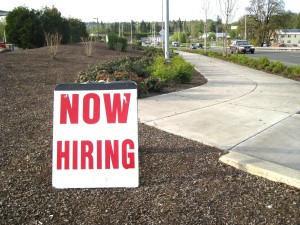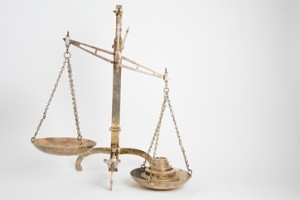By: Andrew Abreu
The National Labor Relations Board (“NLRB”) recently announced it will withdraw a near-final rule that was intended to prevent student assistants[1] from forming unions at private universities.[2] In announcing its withdrawal of the rule, the NLRB stated it decided to “withdraw this rulemaking proceeding based on its judgment respecting the most effective allocation of the Board’s limited resources at this time.”[3] While this withdrawal tracks the Biden Administration’s position that federal policy should foster labor organization, the withdrawal came as somewhat of a surprise as the Republican Party holds a majority of the NLRB’s seats.[4] In particular, the withdrawal of the rule is in contrast to the majority’s general philosophy of narrowing the scope of federal labor law.[5]
The NLRB has reversed course on the question of whether student assistants qualify for protection under the National Labor Relations Act (“NLRA”) multiple times since 2000.[6] The crux of this issue is whether student assistants can be deemed to be statutory employees within the meaning of the NLRA.[7] The NLRA itself defines the term “employee” broadly, stating that it shall be inclusive of “any employee” subject to certain exceptions, none of which are applicable to student assistants.[8]
Despite this broad statutory definition, opponents of extending NLRA coverage to student assistants argue that the NLRA was meant to solely cover relationships that are economic in nature.[9] With an eye towards this concept, opponents argue that while the relationship between student assistants and their respective universities is somewhat economic in nature, it is properly categorized as being a primarily educational one.[10] From this, opponents argue that the student assistant relationship falls outside the scope of NLRA coverage as the NLRA solely covers economic relationships.[11]
This was the approach articulated by the NLRB in its notice of proposed rulemaking when it initially announced the now-withdrawn rule in 2019.[12] In particular, within this proposal, the NLRB stated that it was seeking to enact a regulation that established that “students who perform any services for compensation . . . at a private college or university in connection with their studies are not ‘employees’ within the meaning of Section 2(3) of the [National Labor Relations] Act.”[13] Moreover, the NLRB supported this rule on the ground that the NLRA sought to give the NLRB jurisdiction solely over economic relationships.[14] As the NLRB determined that student workers had a relationship with their respective universities that was primarily educational in nature, the NLRB concluded that this relationship fell outside of the scope of the NLRA.[15] However, by withdrawing the near-final rule, the NLRB appears to have rejected this approach in favor of the contrasting, broad approach found in its standing Columbia University decision.[16]
In Columbia University, the NLRB ruled that student assistants are deemed to be statutory employees within the meaning of the NLRA.[17] This case itself overturned Brown University, an earlier NLRB decision that followed the alternative, narrow approach expressed above.[18] In overturning Brown University, the NLRB noted that Brown University was flawed in the fact that it improperly framed the issue of statutory coverage on the idea that the economic relationship between the employer and employee must be the primary one.[19] Rather, in Columbia University, the NLRB noted that the proper framing of statutory coverage was in terms of the mere existence of an economic relationship between the employer and the employee, not whether that relationship itself was the primary one between the two parties.[20] Moreover, the NLRB defined an economic relationship as one where there is the “payment of compensation, in conjunction with the employer’s control [over the employee’s work].”
Applying this concept in its Columbia University decision, the NLRB concluded that while student assistants and their universities have an educational relationship, they also have an economic one as well.[21] Specifically, the NLRB noted that student assistants received compensation in exchange for providing services to the university, the receipt of which was contingent upon the student assistants providing acceptable performance.[22] Moreover, student assistants were subject to corrective counseling or removal upon their failure to properly execute their duties.[23] Through this application, the NLRB was able to come to the conclusion that student assistants had an economic relationship with their university, thus allowing them to fall within NLRA coverage.[24]
Ultimately the withdrawal of this proposed rule and the continuation of the Columbia University standard will benefit student assistants who are seeking to unionize at private universities. Unionizing efforts by student assistants were chilled during President Donald Trump’s tenure as students refrained from seeking the NLRB’s help due to their fear of becoming the test case whereby the NLRB would overrule Columbia University.[25] However, with the withdrawal of the proposed rule and a Republican majority that will likely end in August of this year, student assistants will likely soon have the go-ahead to engage in organizing efforts.[26]
[1] Inclusive within the term “student assistants” are any students who “perform any services for compensation, including, but not limited to, teaching or research . . . in connection with their studies.” Jurisdiction – Nonemployee Status of University and College Students Working in Connection With Their Studies, 84 Fed. Reg. 49,691 (Sept. 23, 2019).
[2] Jurisdiction – Nonemployee Status of University and College Students Working in Connection With Their Studies, 86 Fed. Reg. 14,297 (Mar. 15, 2021).
[3] Id.
[4] Braden Campbell, NLRB Withdraws Pending Rule Blocking Grad Student Unions, Law360 (Mar. 12, 2021, 9:24 AM), https://www.law360.com/articles/1364213.
[5] Id.
[6] Compare Brown Univ., 342 N.L.R.B. 483 (2004) (holding that student assistants are not afforded NLRA coverage) with Trs. of Columbia Univ., 364 N.L.R.B. No. 90 (2016) (overturning Brown University and holding that student assistants are covered by the NLRA).
[7] Trs. of Columbia Univ., 364 N.L.R.B No. 90, 1 (2016).
[8] 29 U.S.C. § 152(3) (2018).
[9] Brown Univ., 342 N.L.R.B. 483, 488 (2004).
[10] Id.
[11] Id. at 489–90.
[12] Jurisdiction – Nonemployee Status of University and College Students Working in Connection With Their Studies, 84 Fed. Reg. 49,691 (Sept. 23, 2019).
[13] Id.
[14] Id.
[15] Id.
[16] Trs. of Columbia Univ., 364 N.L.R.B No. 90 (2016).
[17] Id. at 1.
[18] Id.
[19] Id. at 5–6.
[20] Id. at 2.
[21] Id. at 6.
[22] Id. at 15.
[23] Id.
[24] Id. at 2.
[25] Campbell, supra note 4.
[26] Id.




